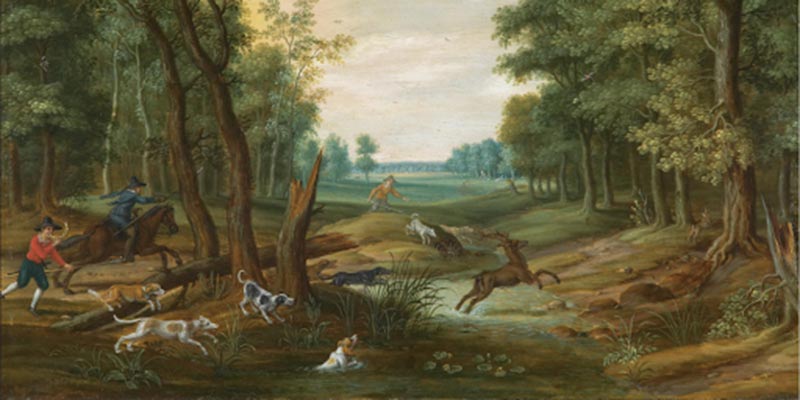Collective Narratives and Different Games
Posted on Thursday 30 June 2022

If you did not already know, there is a Complexity & Stability reading group here at the University of York, and the last paper we read through was a somewhat weird piece for us. The piece, Collective narratives catalyse cooperation by Gokhale, Bulbulia, and Frean attempts to use population dynamics and game theory to explain storytelling and cooperation (Gokhale, Bulbulia and Frean, 2022). Our usual topics are descended from mathematical models of (usually) large ecosystems, such as the classical treatment by May (1972). In May’s original work, he highlighted how complexity gives more ways for a system to become unstable, and work since then has focused on how systems cheat this simple mathematical relationship (Law and Morton, 1996; e.g. Allesina and Tang, 2015; Mougi, 2022). One avenue of interest to the group generally is how members of the ecosystem interact, whether that be via exploitation, competition, mutualism, or cooperation (e.g. Qian and Akçay, 2020), which is why Gokhale et al. (and game theory more generally) came up.
Gokhale et al. try to ask a meta-game theory question. Suppose groups of individuals are all playing a standard cooperation game, usually called Stag Hunt. Individuals in the group must decide whether they will hunt a stag, or a hare. The stag is worth more, but it comes with a risk in that players can only snag the stag if enough cooperate to do so. If they fail to round up enough cooperators, then the players hunting the stag fail and get nothing. On the other hand, the players hunting the hare always get the same payoff.

Image by Chris Jensen and Greg Riestenberg, CC-BY-SA-3.0.
Gokhale et al. then ask what happens if the players have some sort of structure to their preferences. In this case, in addition to their options of what to do when they actually go to hunt, they also have the ability to share a message with the current group of hunters. The exact set-up for sharing the message differs, but, more importantly, the hunters all only have two messages and have already decided on what strategy they will play in response to what message they receive. Some hunters might interpret “message 1” as a call to hunt a stage, others might interpret it to be a call to hunt a hare and similarly for “message 2”. Finally, the hunters have a preference for message 1 or message 2 which helps determine which message is shared during the hunt.
Skipping much of the analysis, Gokhale et al. find that stag-hunting cooperation tends to enter the population and grow within it while hare-hunting individualism does not usually have this behaviour. The general conclusion is then that, if a population can utilise some signal in a Stag hunt set-up, cooperation is likely to evolve over time.
After the meeting, I was talking with Kennedy Osuka Edeye and he made an interesting point: this sort of structure might occur in a management scenario, but with a different outcome. If you are familiar with game theory, you might be able to guess one way this might happen: altering the pay-offs (David and Robinson, 2005). For an on-the-ground perspective, one might envision a situation where one can cooperate with management for long-term benefit, or defect to receive short-term benefit. If your fellow players cooperate, you all will have increased long-term benefits. If your fellow players defect, however, it hurts your short-term situation and your long-term situation. If too many players defect, then the system comes crashing to the ground and there is no ecosystem for anyone. This then resembles at first glance a game of Chicken or Hawk-Dove.

Image by Chris Jensen and Greg Riestenberg, CC-BY-SA-3.0.
The management problem is then how to spread messages that promote cooperation without necessarily knowing which messages are being received, how the messages are being decided on, or even the full context of what the messages mean. Furthermore, this problem needs to be done knowing that the players are incentivised to defect and might try to defect if they see other players defecting in either a tit-for-tat strategy (like in Prisoner’s Dilemma, Axelrod and Hamilton, 1981) or to try and recoup their losses before it is too late. I have no answers for this, but adding forcing (i.e. management) and looking at other games might be natural extensions of the paper by Gokhale et al.
Bibliography
Allesina, S. and Tang, S. (2015) ‘The stability–complexity relationship at age 40: a random matrix perspective’, Population Ecology, 57(1), pp. 63–75. doi:10.1007/s10144-014-0471-0.
Axelrod, R. and Hamilton, W.D. (1981) ‘The evolution of cooperation’, Science, 211(4489), pp. 1390–1396. doi:10.1126/science.7466396.
David, G. and Robinson, D. (2005) ‘Dynamic Periodic Table of the 2×2 Games: User’s Reference and Manual’. Available at: https://www.researchgate.net/publication/260403740_Dynamic_Periodic_Table_of_the_2_2_Games_User’s_Reference_and_Manual (Accessed: 27 April 2022).
Gokhale, C.S., Bulbulia, J. and Frean, M. (2022) ‘Collective narratives catalyse cooperation’, Humanities and Social Sciences Communications, 9(1), pp. 1–9. doi:10.1057/s41599-022-01095-7.
Law, R. and Morton, R.D. (1996) ‘Permanence and the Assembly of Ecological Communities’, Ecology, 77(3), pp. 762–775. doi:10.2307/2265500.
May, R.M. (1972) ‘Will a large complex system be stable?’, Nature, 238(5364), pp. 413–414. doi:10.1038/238413a0.
Mougi, A. (2022) ‘Predator interference and complexity-stability in food webs’, Scientific reports, 12(1), p. 2464. doi:10.1038/s41598-022-06524-w.
Qian, J.J. and Akçay, E. (2020) ‘The balance of interaction types determines the assembly and stability of ecological communities’, Nature ecology & evolution, 4(3), pp. 356–365. doi:10.1038/s41559-020-1121-x.
